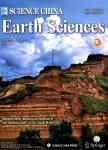Early Paleogene Arctic terrestrial ecosystems affected by the change of polar hydrology under global warming:Implications for modern climate change at high latitudes
Early Paleogene Arctic terrestrial ecosystems affected by the change of polar hydrology under global warming:Implications for modern climate change at high latitudes作者机构:Department of Science and Technology College of Arts and Sciences Bryant University
出 版 物:《Science China Earth Sciences》 (中国科学(地球科学英文版))
年 卷 期:2010年第53卷第7期
页 面:933-944页
核心收录:
学科分类:07[理学] 070601[理学-气象学] 0708[理学-地球物理学] 0706[理学-大气科学] 0704[理学-天文学]
基 金:supported by CAS/SAFEA International Partnership Program for Creative Research Teams, the Pilot Project of Knowledge Innovation of CAS (Grant No. KZCX2-YW-105) the National Basic Research Program of China (Grant No. 2006CB806400) the National Natural Science Foun-dation of China (Grant Nos. 40402002, 40872011) the American Chemi-cal Society Petroleum Research Funds, NASA RI Space Grant Bryant University Summer Research Funds
主 题:Paleogene climate Arctic ecosystems global warming global hydrology vegetation change
摘 要:Our understanding of both the role and impact of Arctic environmental changes under the current global warming climate is rather limited despite efforts of improved monitoring and wider assessment through remote sensing technology. Changes of Arctic ecosystems under early Paleogene warming climate provide an analogue to evaluate long-term responses of Arctic environmental alteration to global warming. This study reviews Arctic terrestrial ecosystems and their transformation under marked change of hydrological conditions during the warmest period in early Cenozoic, the Paleocene and Eocene. We describe a new approach to quantitatively reconstruct high latitudinal paleohydrology using compound-specific hydrogen isotope analysis which applies empirically derived genus-specific hydrogen isotope fractionations to in situ biomolecules from fossil plants. We propose a moisture recycling model at the Arctic to explain the reconstructed hydrogen isotope signals of ancient high latitude precipitation during early Paleogene, which bears implications to the likely change of modern Arctic ecosystems under the projected accelerated global warming.



